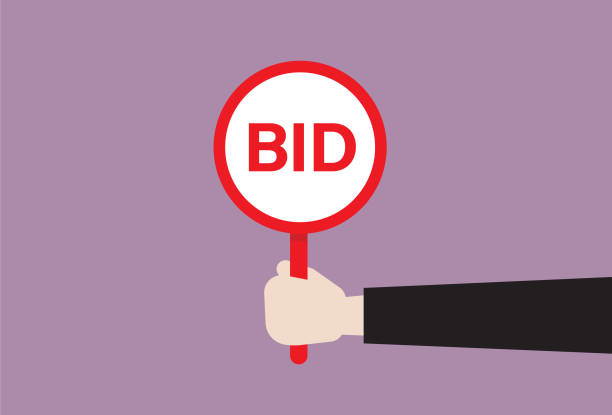
Bid shading is an algorithm-based method of saving money in first-price auctions for advertising. Particularly, it bridges the gap between what consumers are prepared to pay for impressions and what they must spend. When done correctly, bid shading may save marketers a lot of money. So, what is bid shading, exactly? And how exactly does it work? What impact does it have on marketers and publishers? All of this and more will be explained in this guide.
Bid shading algorithms examine prior clearing prices of a placement, compare them to what a buyer is ready to pay and make their best prediction of the lowest price a buyer may submit to win the auction. However, there is a lot that may go into bid shading algorithms—for example, ad size, site, placement on-page, and so on—and each firm handles it a bit differently. Bid shading was created to keep consumers who are dissatisfied with having to pay much higher costs under the first-price model, which has recently gained favor.
How does bid shading work?

Although ad tech companies differ in how to bid shading works, the main goal is to discover and agree on a bid cost that is somewhere between the first and second-price bids. Taking the arithmetic median of the first-price and second-price bids is one approach to achieve this. While this is a simple technique, it is not the most efficient in terms of calculating the best value for the offer.
The alternative way is to examine previously-stored data such as bid history, site statistics, ad size, and win rates, and then compute the bid based on the expected value of the impression.
However, because the main objective of bid shading is to “bid lower to save money,” users of bid shading will end up winning fewer auctions than they would if it wasn’t in use.
According to data from The Trade Desk, Rubicon Project, and Pubmatic, bid shading can save buyers up to 20% on costs. Some companies provide bid shading as a free service, while others charge a fee based on the money saved.
Who offers bid shading?
A small number of DSPs and exchanges, including all of the majors, provide bid shading. Since the introduction of programmatic advertising, publishers and advertisers have found it increasingly challenging to effectively manage ad inventory.
Publishers are debating whether first-price style auctions are the way to go moving ahead because programmatic advertising networks predominantly rely on second-price style auctions to generate money.
Google Ad Manager adopted first-price style auctions throughout its network in late 2019, providing for improved pricing transparency for both display and video advertisements. Bid shading has offered advertisers more control over ad space spending while also stabilizing demand for publishers’ ad inventory.
What does bid shading mean for buyers?
Bid shading is a service that is provided to buyers. If you’re a buyer, there’s nothing wrong with bid shading. Demand-side platforms (DSPs) introduced bid shading to shield their clients from price inflation when the market transitioned from second-price to first-price auctions.
Today, it’s simply one part of their larger bidding strategy. The DSP analyses historical trade data to anticipate the minimum successful bid price for future purchasing opportunities, which is used to inform bid-shading. The bid values of the DSP are then gradually reduced to achieve an appropriate price while retaining the win rate. This makes a lot of sense as a way for DSPs to add value to their consumers.
How does bid shading affect publishers?
In principle, first-price auctions mean that publishers will receive greater rates from purchasers. Many purchasers didn’t know how to alter their bids for a first-price auction before bid shading, so they momentarily overpaid, benefiting publishers. However, the recent evolution of bid shading has resulted in a 20% fall in publisher CPMs on average. With the correct tools, publishers can maintain price control and manage yield.
Setting price floors is a profitable method that publishers can adopt. Adjusting price floors in Ad Exchange may have a big beneficial influence on publisher revenues if done correctly. The price floor sets a lower price ceiling for bid shading algorithms, and the impact is similar to the second price auction, except that the adjustment occurs on the bidder’s side rather than in the auction itself.
What does the future of bid shading hold?
As per numerous advertising sources, bid shading is not a totally new concept. Historical bid data and auction dynamics have long been used by DSPs and SSPs to enhance and improve their products. In general, they aren’t merely providing ‘bid shading.’
Those that cannot afford to create their own technology must rely on DSPs to generate the appropriate bids and avoid spending too much. Publishers on the sell-side are not required to take any action since they have no influence over bid shading. Bid shading will very certainly be used when the industry transitions to first-price auctions.
Final Thoughts
Understanding the dynamics of both first-price and second-price auctions is critical for publishers. First-price auctions may increase income prospects for publishers while also providing advertisers with a clearer insight of auction dynamics. The switch to first-price auctions is simply one piece of the transparency jigsaw as the industry strives to create a fair playing field that allows for more transparent bidding.
In addition to the ability to win premium inventory bids, header bidding and bid shading give marketers a wider reach to reach their target audience at a lower cost. For all intents and purposes, both publishers and marketers are in a win-win position.
Read More
10 Questions Every Publisher should ask when selecting an Advertiser
Top 13 Ways to Improve Your Organic Click-Through Rate (CTR)
